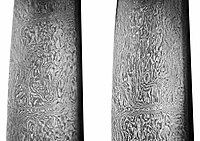
Photo from wikipedia
Abstract Although the steel industry has brought economic benefits to many countries, it also has non-negligible impacts on the environment. To understand how steel production impacts are shared among trading… Click to show full abstract
Abstract Although the steel industry has brought economic benefits to many countries, it also has non-negligible impacts on the environment. To understand how steel production impacts are shared among trading countries, it is necessary to conduct a large scale research from environmental and economic perspectives. This study applies the life cycle assessment method (LCA) to analyze 12 major iron-mining and steel-making countries, calculate a “unit GDP impact intensity” and finally raise an issue of “pollution allocation” among actors in international trade. Results firstly indicate that normalized ecotoxicity impacts over the entire production chain are among the most crucial consequences of iron and steel production, even higher than the non-negligeble impacts from carbon emissions. Secondly, performance indicators indicating the relation between environmental impacts and economic activities can be calculated as Total Normalized Impacts/GDP, an inverse measure of environmental versus economic efficiency. South Africa has the highest unit GDP impact intensity (4.35E-4 TNI/US $) in iron mining, while Canada has the largest intensity in steel manufacturing (5.81E-3 TNI/US $). Thirdly, countries that largely benefit from importing “pollution-free” materials, should share a proportional responsibility for the environmental pollution caused by iron&steel processing activities occurring in their trade partner countries: this is especially true for China and US, which are major iron ore/steel importing economies. Finally, this paper proposes policy implications at local, national and international levels, from a perspective of global sustainable development.
Journal Title: Journal of Cleaner Production
Year Published: 2020
Link to full text (if available)
Share on Social Media: Sign Up to like & get
recommendations!